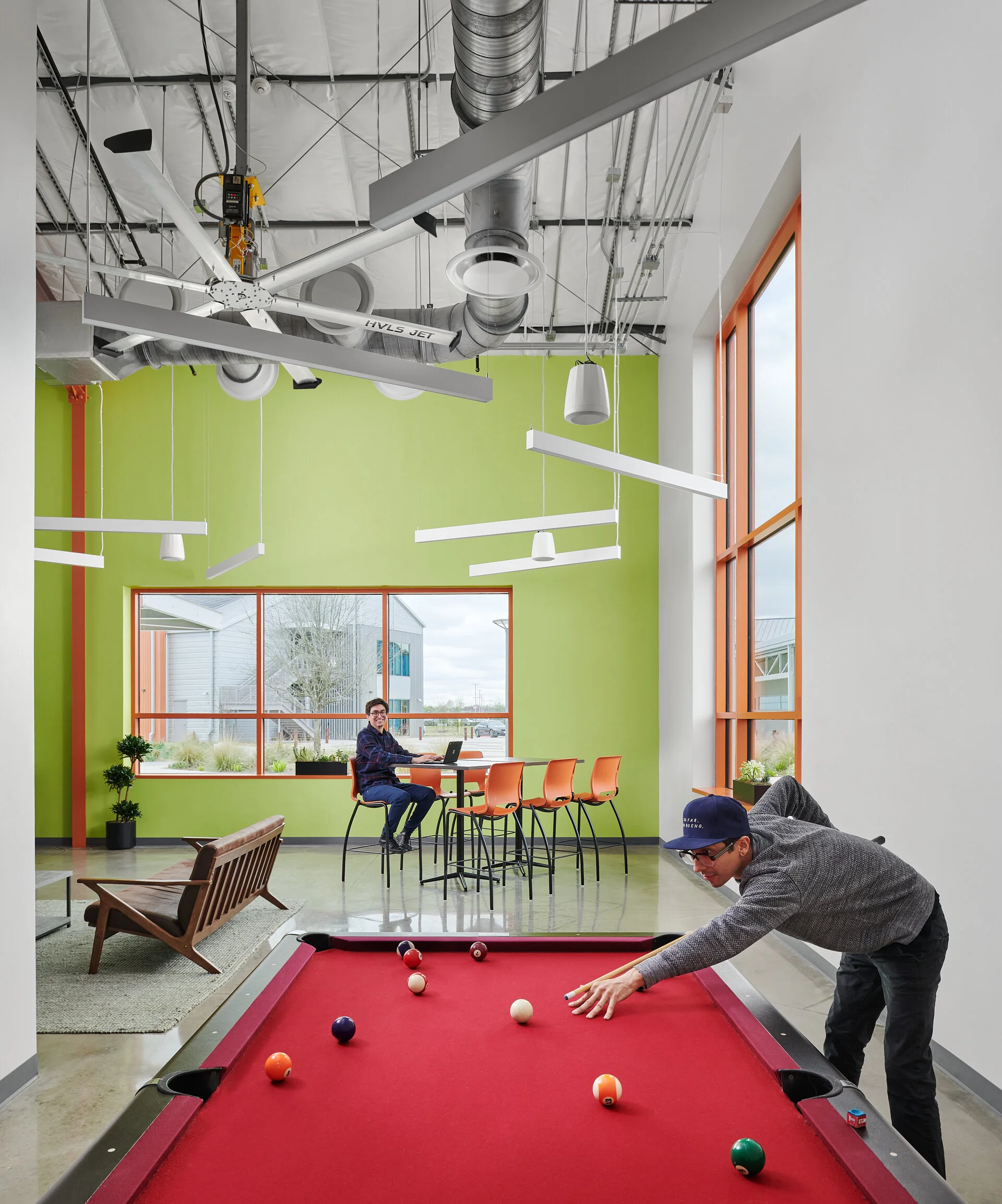Austin has proven to be an ideal location for tech companies to office, whether it be as their main headquarters or as a regional location. As a result, there has been a drive to create fun and dynamic work spaces in the area that foster creativity, flexibility and fun for the companies employees and it has been a pleasure to be a part of showcasing many of them.
One of the last projects we shot in 2019 was this great space in East Austin designed by the local Perkins+Will office for their client, ShareNow. ShareNow (formerly Car2Go) has located their new offices right in the thick of East Austin, a thriving neighborhood that encompasses much of what Austin is all about just minutes away from Downtown. The office features a variety of dynamic spaces, but none more fun than this employee lounge, featuring some beautiful furnishings and a balcony overlooking East 6th Street.
When we arrived at the project, there was a beautiful mid-morning light streaming into the space, so we knew that we had to start with this shot first, leaving us to scramble a bit to fine tune the staging of all the furniture and related objects. In this case, because the office was still fairly new, this also sent several of the design team members scrambling throughout the space to collect a few additional objects from around the office in order to help populate the shelves in our view. While they focussed on those items, my assistant and I focussed on the big picture items such as the placement of furniture and rugs, and how everything related to one another. Lighting wise, we added some touches of lights to help shape the furniture and large light fixtures as well as clean up the color of the ceiling and other warm finishes. The end result shows a bright, inviting area for employees to have a break from their day, change work environments, have informal meetings and more.
Lastly, in this video I touch on what’s coming next on the YouTube channel, which will feature a behind the scenes look at the composition, staging, photography and post-processing of an interior vignette that I’ll be doing from my home during the stay-at-home orders put in place under the current circumstances.

